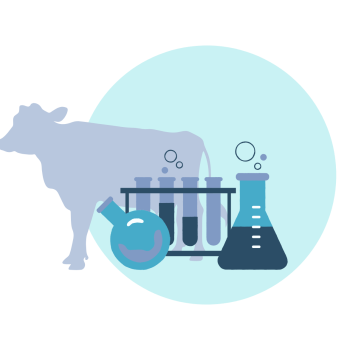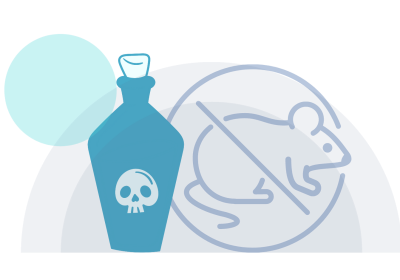A brief history of Warfarin
About 20 million Americans are on warfarin and another 2 million starts taking the drug each year.

Medical history of Warfarin and its impact on healthcare
Early discoveries
As early as 5th century BCE, philosophers such as Anaxagoras and Empedocles in the presocratic era used “Four Elements Theory” to explain the conglomeration of the blood inside the vessels. Building on similar knowledge, Hippocrates used the “Four Humors theory” to explain coagulation and coined the term “thrombus”. This knowledge was carried forward by Plato, Aristotle, and Galen – all of whom were engaged in interpreting the clotting phenomenon. (1)
Physicians and philosophers have long proposed “thinning of the blood” as a treatment for various illnesses so much so that the application of leeches was a common prescription by physicians in earlier centuries. (2)
Farmer’s dismay turned scientific discovery
Fast forward to 1920s when farmers in the Northern USA and Canada were afflicted by a strange disease in which their cattle started dying in large numbers from fatal bleeding, either suddenly or from minor injuries. (3) In desperation, Ed Carlson, a farmer from Wisconsin, drove a dead cow and a milk can of unclotted blood over 200 miles to an agricultural experimental lab to biochemist Karl Link. (4)
Link and colleagues set about to understand the phenomenon and found that a chemical in hay was causing the problem. (4) This chemical was derived from moldy silage made from sweet clover (Melilotus alba and M. officinalis). Later, L M Roderick from North Dakota showed that this chemical contained hemorrhagic factor that reduces that activity of prothrombin. (3)

Other anticoagulants
Around the same time, in 1916, at Johns Hopkins, a second-year medical student Jay McLean and his physiologist lab supervisor Willian Henry Howell were exploring their interest in substances that control blood clotting.
Howell along with another medical student L. Emmett Holt Jr. was able to isolate another fat-soluble anticoagulant that was distinct from the chemical isolated by McLean 2 years previously. Howell coined the term “heparin” to label this anti-coagulant. The term “heparin” was derived from “hepar” which means “liver” in Greek – the tissue from which it was first isolated.
Following this discovery, water soluble heparin first began to be produced commercially by a pharmaceutical company in Baltimore. However, studies conducted at Mayo clinic in Minnesota by Edward Mason proved that this compound had many adverse effects such as headaches, fever, and nausea. (5)
Discovery of Warfarin
By 1940, after 6 years of work, Link and colleagues were able to establish that a natural substance called “coumarin” in moldy hay could be oxidized to become a substance known as “dicoumarol”. This work was funded by Wisconsin Alumni Research Foundation (WARF), who were awarded the patent for dicoumarol in 1941. (4)
The name of the compound was derived from WARF (Wisconsin Alumni Research Foundation) and –arin from coumarin. (3)
Warfarin used as a rat poison
By 1945, Link considered using coumarin derivative as a rodenticide. Since dicoumarol acted too slowly to become a rat poison, Link and colleagues worked through 150 variations of coumarin and found that number 42 was potent enough to kill rats. By 1948, WARF was able to market the product as rodenticide. (4)

A tragedy turned to life saving therapy
In 1951, a US army inductee took multiple doses of warfarin rodenticide in attempted suicide. Doctors at the hospital were able to successfully treat the patient after using Vitamin K. This encouraged researchers to study the use of warfarin as a therapeutic anticoagulant. (4)
At that time, multiple anticoagulants were already available in the market, but each came with its own complications – heparin required parenteral administration and dicoumarol had a long lag period before onset of therapeutic effect. Compared to these anticoagulants, warfarin was found to have high oral bioavailability and high-water solubility. Moreover, it was more potent than dicoumarol, and its effects could be reversed by Vitamin K. Therefore, by 1954, warfarin was approved for human use. (4)
Since warfarin was previously used as a rodenticide, patients were hesitant in using this drug for treat medical illnesses. However, two important factors changed this hesitancy – first, the name of the drug was changed to “Coumadin” to differentiate it from the rodenticide Warfarin. (6) Second, US president Dwight D. Eisenhower was prescribed the drug after a myocardial infarction in 1955, which led to its increased popularity. (4)
Warfarin today
Today, about 20 million Americans are on warfarin and another 2 million starts taking the drug each year. (7) The importance of this drug can be demonstrated by the fact that it is on World Health Organization’s list of essential medicines. (8)
Conclusion
Warfarin is an important drug which has been used extensively to treat conditions of hypercoagulability. In terms of its use and therapeutic effect, it is one of the most effective drugs in the market today, however, it requires special considerations from clinical practitioners due to its adverse effects.
Bibliography :
1. https://www.researchgate.net/publication/311458647_Theories_About_Blood_Coagulation_in_the_Writings_of_Ancient_Greek_Medico-philosophers
2. https://ashpublications.org/hematology/article/2008/1/251/95828/Warfarin-An-Historical-Perspective
3. https://www.ncbi.nlm.nih.gov/pmc/articles/PMC1885167/
4. https://www.nature.com/articles/nrcardio.2017.172
5. https://onlinelibrary.wiley.com/doi/full/10.1111/j.1365-2141.2008.07119.x)
6. https://www.scientificamerican.com/video/blood-rats-and-anticoagulants-the-story-of-warfarin/
7. https://www.ncbi.nlm.nih.gov/pmc/articles/PMC2706162/
8. https://apps.who.int/iris/bitstream/handle/10665/325771/WHO-MVP-EMP-IAU-2019.06-eng.pdf
Insights
-

No-Code Tools for Managing Mental Health and Burnout in Healthcare Settings
Read more“P4” is a term that is often associated with future of medicine – prediction, prevention, personalization and patient participation. Many current health related technologies have already started moving towards the future and many more innovations are yet to come, that will make the goal of holistic medicine true.
-

Impact of health technology on diabetes management
Read more“P4” is a term that is often associated with future of medicine – prediction, prevention, personalization and patient participation. Many current health related technologies have already started moving towards the future and many more innovations are yet to come, that will make the goal of holistic medicine true.
